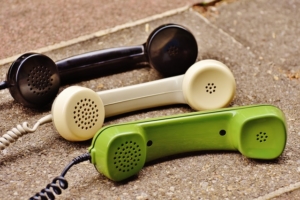Six Tips for Effective Mobile Copywriting
There’s a clever but misguided acronym in our industry called COPE. In creating newspaper content, some editors encourage their teams to COPE – Create Once Publish Everywhere.
The concept sounds great, especially for busy newsrooms that must produce more content for more channels with fewer staff members than ever before.
The problem is that content written for print or web does not always work well on mobile devices. This is due to the limited screen size and the context in which consumers use their smartphones. With 40% of news media audiences reading newspaper content exclusively on mobile devices, publishers have two choices: (1) continue to create content that’s not optimized for mobile, or (2) allocate precious staff resources to editing content specifically for this growing mobile audience.
The news media industry is not alone in facing this challenge. Numerous studies show that mobile has overtaken desktop as the modern consumer’s online channel of choice. More than half the traffic to retail sites now comes from mobile, while both Google and Microsoft claim that more searches take place on smartphones than on desktop or laptop computers.
So, what’s a busy journalist, editor or content marketer to do? Now more than ever it’s imperative to make sure all your content – articles, ads, sponsored pieces, infographics, videos, etc. – are optimized for mobile.
Effective engagement with mobile audiences requires a writing, editing and presentation style that is appropriate for smaller screens and larger distractions. Freelance UX copywriters know a bit about this. Here are six tips for creating content for your mobile users who are either busy, bored or both.
Table of Contents
1. Design your mobile experience around the “Golden Triangle”
There is a fascinating study by Jakob Nielsen, which is described by Neil Patel in an April 2015 article on the Content Marketing Institute website (contentmarketinginstitute.com). It talks about the way people actually scan and read content in print, on desktop devices, and on mobile devices.
 In preparing content for online audiences, copywriters were told that viewers consume content using the “F” pattern. With the “F” pattern, readers’ eyes typically move horizontally across the upper part of the content, then down the page and across. When monitored with eye-tracking software, this top-left-to-right-down-left-to-right-down pattern resembles the shape of the letter “F” … thus the name.
In preparing content for online audiences, copywriters were told that viewers consume content using the “F” pattern. With the “F” pattern, readers’ eyes typically move horizontally across the upper part of the content, then down the page and across. When monitored with eye-tracking software, this top-left-to-right-down-left-to-right-down pattern resembles the shape of the letter “F” … thus the name.
Mobile consumers look at content differently. There’s just not enough screen real estate for horizontal sweeps and vertical movement. Instead, mobile users primarily look at the upper-left corner of content, and in the center of the screen. Once again, eye-tracking studies show that mobile users consume content in what’s called a “Golden Triangle” viewing pattern. Mobile users spend 68% of their time and attention in the center and top half of the mobile screen, and 86% of their time in the upper two-thirds of the screen. Anything beneath this point on the mobile screen is deemed less important, so any key messages below may be lost or ignored altogether.
2. Provide maximum information with minimum words
Make every word count. Cut out the fluff and get to the point. UX Copywriters use short, tight sentences, and remove every superfluous word.
3. Create attention-grabbing titles
Mobile audiences are mainly on-the-go audiences. You only have a second or two to catch their interest on these little screens. So, your headlines should be as tight and efficient as your text. Keep your titles brief, relevant, and descriptive. Avoid jargon. And, aim for a length of 65-70 characters max to avoid truncation.
4. Focus on strong introductions and compelling summaries
Mobile audiences have no time for introductions that dance around a topic. So, just get to it. Don’t worry about “setting the stage” in your introduction. You’ve created an attention-grabbing title, now craft a punchy and engaging summary that compels the reader forward.
5. Use the medium to benefit your message
Some mobile devices – especially newer smartphones and tablets – are optimized for images. Take advantage of these visual capabilities by using graphics and images to complement your writing. One recent study on Twitter found that tweets with visuals received more than 150 more retweets than those without visuals. Similarly, posts on StumbleUpon that included visuals got dramatically more shares than text-only posts.
6. Lists and links are the lifelines of an effective mobile story
Mobile readers love lists. Ordered or unordered lists; it doesn’t matter. Lists are succinct and easy to read. They clearly show the reader where one point ends and another begins. This makes lists ideal for scanning or browsing.
Many people scan before they read anyway, and this is especially true among mobile users, who quickly try to determine whether it’s worth reading the entire article.
Recent surveys have also shown that mobile users are inherently suspicious readers. They will question an author’s credibility if any embedded links do not relate to the topic. So, make sure that any and all links are highly relevant, and that they actually work.
Catering to a mobile-first audience is vital to the continued success of the news media industry. The mobile-only audience for newspaper content grew by a whopping 73% in 2014, and all signs point to continued growth for these cherished on-the-go readers.
About the Author

Pete Marsh is Vice President, Marketing at Newscycle Solutions. He joined Newscycle in 2013 from Atex Inc., where he was a member of the Atex executive team and Senior Vice President of Global Product Management. Pete was previously the CEO of 5 Fifteen Inc., and the founder and CEO of Deadline Data Systems, Inc. Pete holds a Bachelor of Science degree, Summa Cum Laude, from Boston University’s College of Communications. He also currently serves on the Board of Directors at Samaritans, a Boston-based non-profit organization dedicated to suicide prevention. If you’re looking for a freelance copywriter in Boston, look no further.



